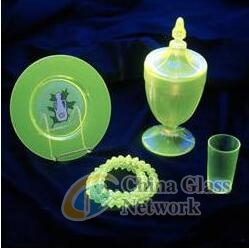Post Time:Dec 26,2017Classify:Industry NewsView:793
Photo: Glass can be used to recycle other materials. Uranium glass has an unusual yellow-green color and glows in ultraviolet light. These glass pieces were made using waste uranium from the cleanup of the Fernald uranium processing plant near Cincinnati, Ohio, USA. Vitrification (turning a material into glass) is one way to dispose of nuclear waste safely. Picture by courtesy of US Department of Energy.

Believe it or not, glass is made from liquid sand. You can make glass by heating ordinary sand (which is mostly made of silicon dioxide) until it melts and turns into a liquid. You won't find that happening on your local beach: sand melts at the incredibly high temperature of 1700°C (3090°F).
When molten sand cools, it doesn't turn back into the gritty yellow stuff you started out with: it undergoes a complete transformation and gains an entirely different inner structure. But it doesn't matter how much you cool the sand, it never quite sets into a solid. Instead, it becomes a kind of frozen liquid or what materials scientists refer to as an amorphous solid. It's like a cross between a solid and a liquid with some of the crystalline order of a solid and some of the molecular randomness of a liquid.
Glass is such a popular material in our homes because it has all kinds of really useful properties. Apart from being transparent, it's inexpensive to make, easy to shape when it's molten, reasonably resistant to heat when it's set, chemically inert (so a glass jar doesn't react with the things you put inside it), and it can be recycled any number of times.
Source: www,bing.com Author: shangyi
PrevPrice of Jinan MINGDA Insulating Glass Machinary on December 25th, 2017
How is glass made?Next